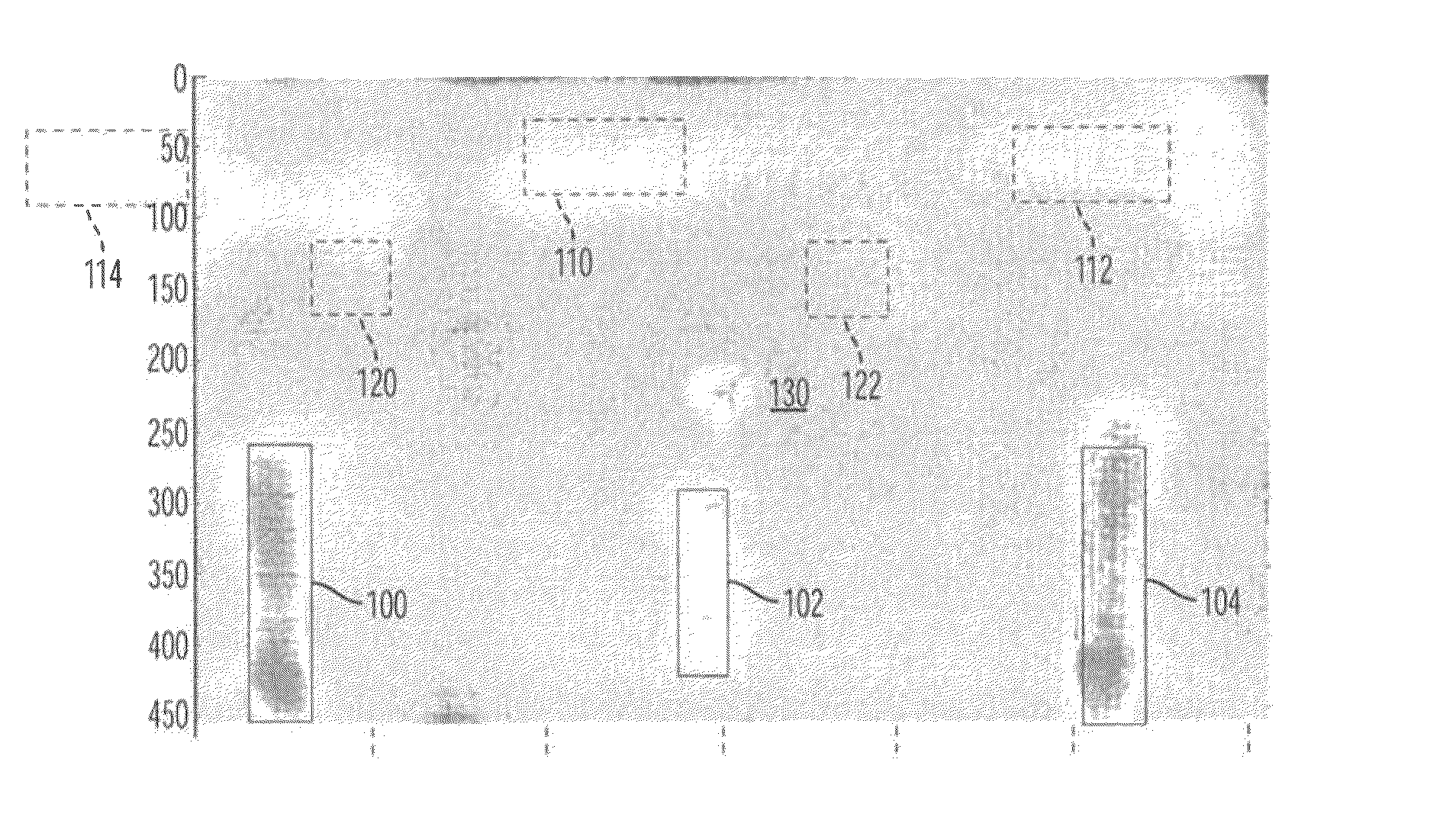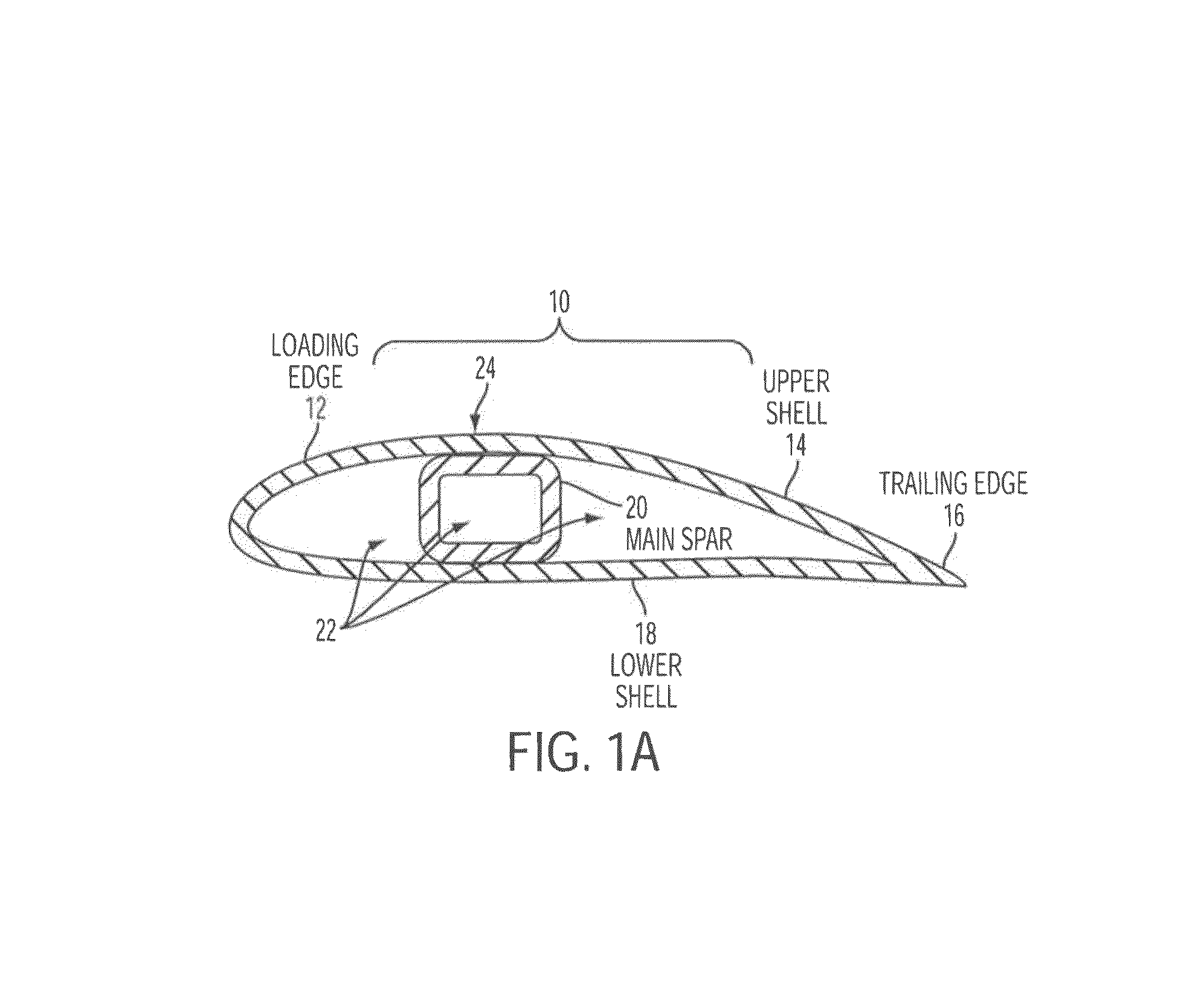Infrared detection of defects in wind turbine blades
a technology of infrared detection and wind turbine blades, which is applied in the direction of mechanical roughness/irregularity measurement, optical radiation measurement, instruments, etc., can solve the problems of difficulty in detecting the presence of defects, the time required to complete a measurement is too long to be operationally attractive, and the method is generally limited, so as to reduce the temperature inside the blade. , the effect of reliably and quickly detecting defects
- Summary
- Abstract
- Description
- Claims
- Application Information
AI Technical Summary
Benefits of technology
Problems solved by technology
Method used
Image
Examples
Embodiment Construction
[0031]The method and apparatus of the preferred embodiment of the present invention is illustrated in FIG. 4. Air cooler than the temperature of the composite and the ambient air temperature is blown through the inside region of the wind turbine blade using an air conditioning unit 86 and a blower 84. The difference in the temperature of the cooler air inside the blade and the temperature of the ambient air outside the blade is sufficient to produce a change in the surface temperature of the composite associated with a defect anywhere in the composite that is strong enough to be detected with an inexpensive, uncooled IR camera 80. A hand-held IR camera 80 can be moved continuously and rapidly along the entire length of the blade to record images of the surface. The defects can be identified by visual inspection or by computer 82 using a noise cancelled IR image.
[0032]FIGS. 5 and 8 illustrate the temperature change on the surface of the composite shown in FIG. 2 for a 6° C. differenc...
PUM
| Property | Measurement | Unit |
|---|---|---|
| temperature | aaaaa | aaaaa |
| temperature | aaaaa | aaaaa |
| thick | aaaaa | aaaaa |
Abstract
Description
Claims
Application Information
 Login to View More
Login to View More - R&D
- Intellectual Property
- Life Sciences
- Materials
- Tech Scout
- Unparalleled Data Quality
- Higher Quality Content
- 60% Fewer Hallucinations
Browse by: Latest US Patents, China's latest patents, Technical Efficacy Thesaurus, Application Domain, Technology Topic, Popular Technical Reports.
© 2025 PatSnap. All rights reserved.Legal|Privacy policy|Modern Slavery Act Transparency Statement|Sitemap|About US| Contact US: help@patsnap.com



